Whimsical and charming, yarrow (
Achillea millefolium) attracts a wide range of butterflies, birds and beneficial insects while also repelling many of our uninvited insect pests. This makes yarrow an outstanding plant for both habitat and veggie gardens. Predatory insects, like hoverflies and our beloved ladybugs, are attracted to yarrow and take over the battle against pests while you sit back and enjoy the beauty.
Yarrow’s delicate fern-like foliage contradicts the resilient, flexible and highly variable nature of this perennial wildflower. It is drought tolerant yet accepts summer water. It can be mowed as a lawn, yet its showy flowers call wild meadows to mind. Its evergreen foliage can range from dark green to silver-gray, and its exuberant spring to summer flowers range from bright white to the deepest pink.
Caution: This plant may become invasive in some regions, displacing native vegetation. Use care when selecting and siting this plant and select cultivars native to your region.
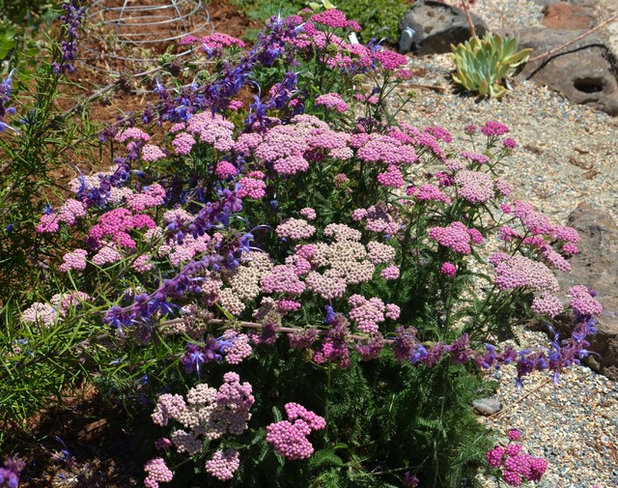
Pete Veilleux, East Bay Wilds
Botanical name: Achillea millefoliumCommon name: Common yarrow
Origin: Common throughout California except deserts; also native to many temperate regions of the Northern Hemisphere in Asia, Europe and North America
Natural habitat: Many California plant communities except deserts; elevation below 11,000 feet
Where it will grow: Easily hardy to -30 degrees Fahrenheit (USDA zones 3 to 9; find your zone)
Shown: A. millefolium ‘Island Pink’
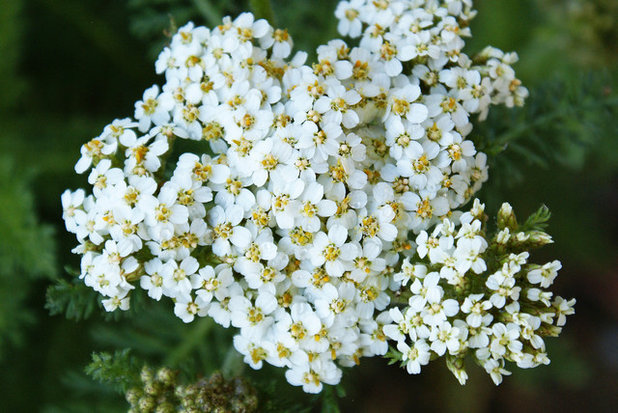
Debbie Ballentine
Water requirement: Occasional water to drought tolerant; away from the coast it performs best with summer water every two to four weeks
Light requirement: Full sun to light shade
Soil: Adaptable
Mature size: Low, spreading foliage; flowering height varies from 6 inches to 3 feet
Benefits and tolerances: Attracts butterflies, pollinators and many beneficial insects; repels some insect pests; an excellent companion plant in vegetable gardens; great erosion control; good under oaks; tolerates deer, alkaline soil, sand, clay, seasonal flooding, light foot traffic and mowing
Seasonal interest: Showy spring and summer flowers; soft, evergreen fern-like foliage
When to plant: Late fall is ideal; winter works well; spring is acceptable; summer can be challenging to all but the most experienced gardener
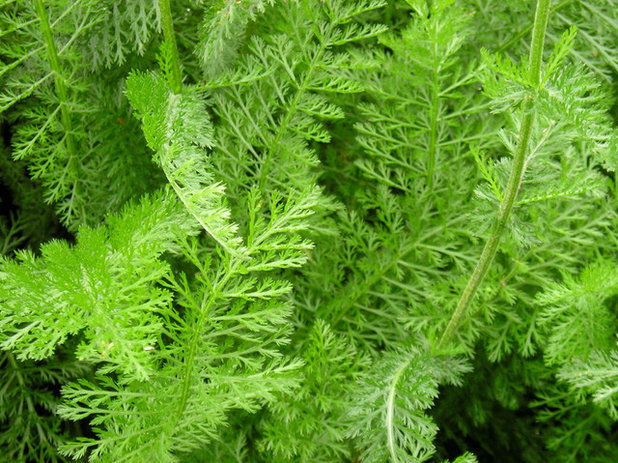 Distinguishing traits.
Distinguishing traits. Yarrow is highly variable. It has white to dark pink flowers, depending on the selection, and evergreen fern-like foliage. It’s drought tolerant yet accepts summer water, and makes a great lawn alternative.
Photo by Anna
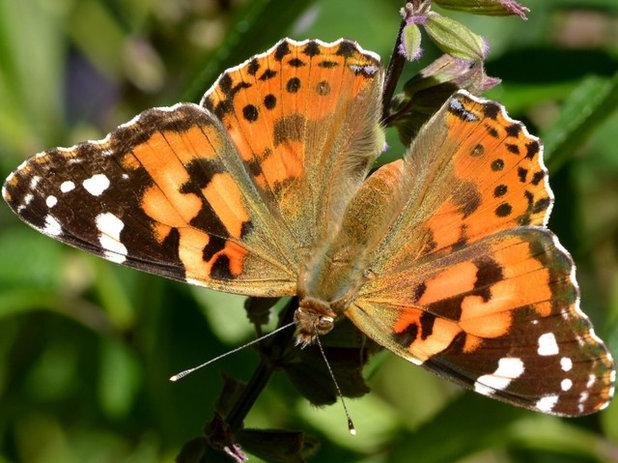
Treebeard
Wildlife value. Painted lady butterflies (
Vanessa cardui), like this one, use yarrow as a host plant for their young caterpillars, laying eggs on or near the plants. Don’t squish those little caterpillars — they’ll grow up to be beautiful butterflies.
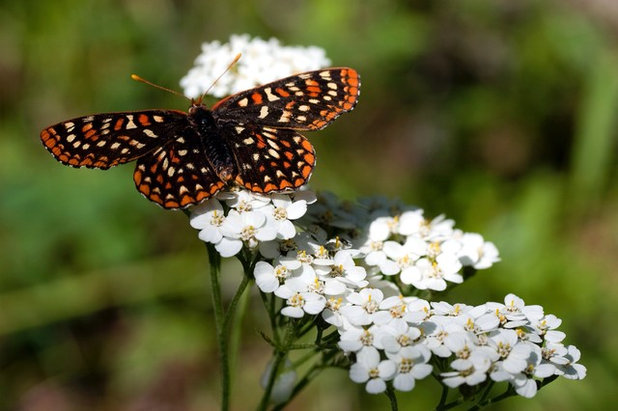
Many other butterflies, like this variable checkerspot (
Euphydryas chalcedona), enjoy yarrow’s sweet nectar.
As with many plants in the Composite family, yarrow is a prolific producer of nectar and pollen, making it highly attractive to native bees and honeybees, who feed on both.
Predatory insects like ladybugs, lacewings, hoverflies and mini-wasps are attracted to yarrow and then feed on other insect pests. While yarrow itself repels some insect pests, the predatory insects reduce their populations even more.
Leaving the textural seed heads through the winter will provide for seed-eating birds, like juncos, sparrows and towhees. Yarrow’s foliage is foraged by birds in the winter, so don’t be surprised when your yarrow has been munched on but you can’t find the culprit. Some cavity-nesting birds use yarrow to line their nests.
Photo by Thomas Spann
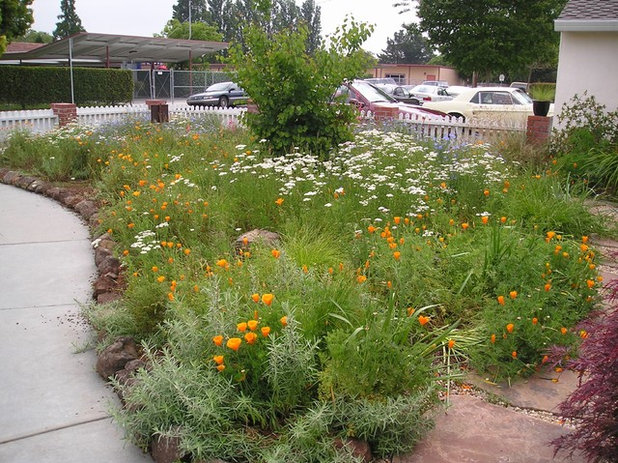
Agi Kehoe Landscaping
How to use it. Use yarrow as a ground cover or lawn alternative, in a natural meadow or a habitat garden, or as a slope stabilizer. Its white flowers are stunning in a night garden, and also as cut or dried flowers. Plant it as a companion plant in vegetable gardens.
Shown: A California front yard planted with yarrow and California poppy (
Eschscholzia californica)
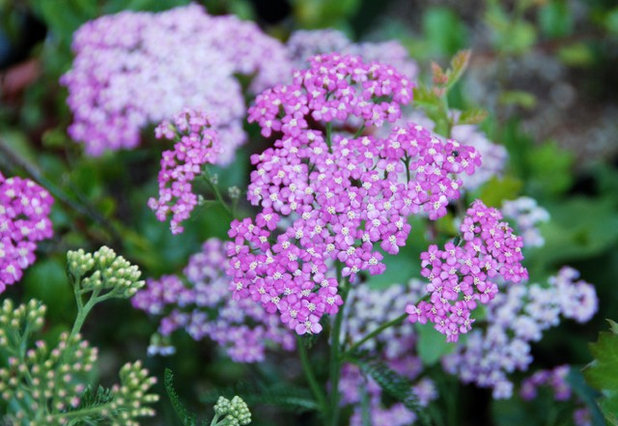
Pete Veilleux, East Bay Wilds
Planting notes. Prune back the seed heads after it flowers, or leave them for the winter birds and for garden texture.
When yarrow is used as a lawn alternative, the rate of growth and gardener preferences determine the timing of mowing and the exact mower height, but a good starting place is to set the mower to 4 inches and mow about every two weeks.
Select the planting site carefully, since yarrow can spread vigorously.
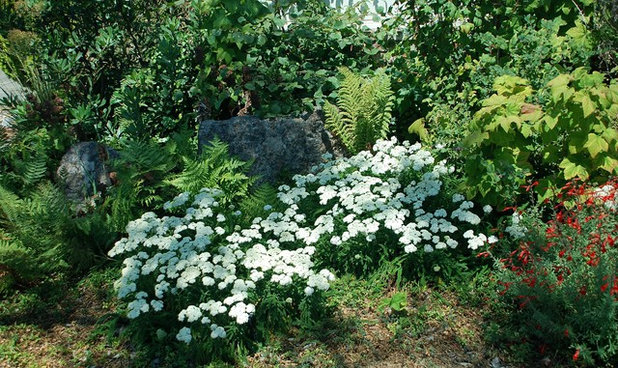
Pete Veilleux, East Bay Wilds
Other cultivars and species. According to many sources,
Achillea millefolium is a variable species that is native throughout the Northern Hemisphere in Europe, Asia and North America. Many of the colorful yarrows commonly found in nurseries are from European stock. Since yarrows can be invasive in some regions and habitats, select plants native to your region.
A few favorite naturally occurring selections of the California form include ‘Rosy Red’, ‘Island Pink’, ‘King Range’, ‘Sonoma Coast’ (shown), ‘Shell Beach’, ‘Point Cabrillo’ and ‘Calistoga’, with gray foliage.





